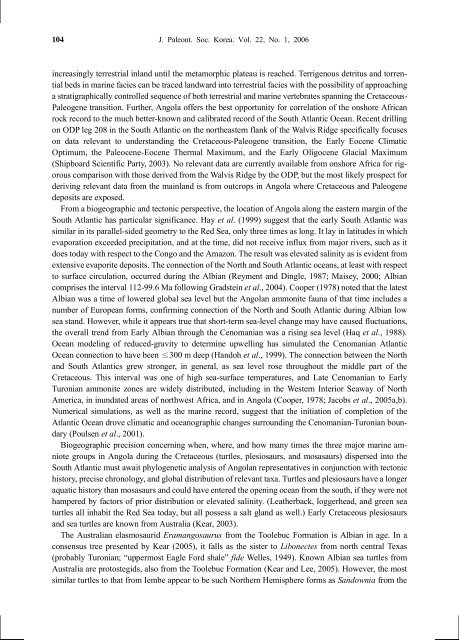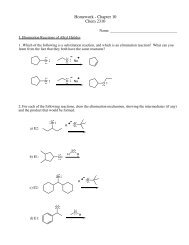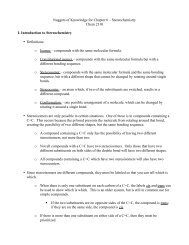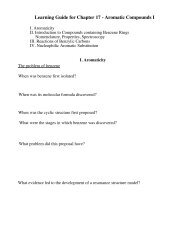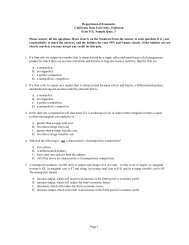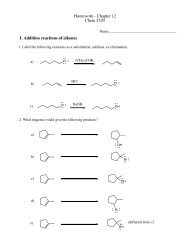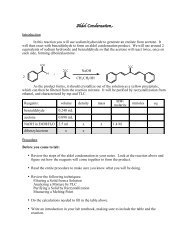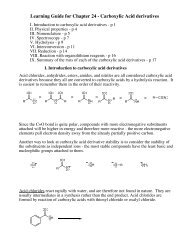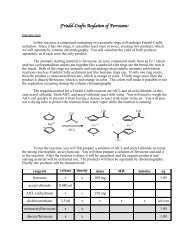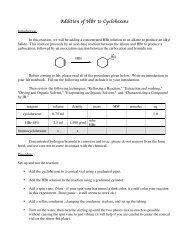the occurrence and geological setting of cretaceous dinosaurs
the occurrence and geological setting of cretaceous dinosaurs
the occurrence and geological setting of cretaceous dinosaurs
- No tags were found...
You also want an ePaper? Increase the reach of your titles
YUMPU automatically turns print PDFs into web optimized ePapers that Google loves.
J. Paleont. Soc. Korea. Vol. 22, No. 1, 2006increasingly terrestrial inl<strong>and</strong> until <strong>the</strong> metamorphic plateau is reached. Terrigenous detritus <strong>and</strong> torrentialbeds in marine facies can be traced l<strong>and</strong>ward into terrestrial facies with <strong>the</strong> possibility <strong>of</strong> approachinga stratigraphically controlled sequence <strong>of</strong> both terrestrial <strong>and</strong> marine vertebrates spanning <strong>the</strong> Cretaceous-Paleogene transition. Fur<strong>the</strong>r, Angola <strong>of</strong>fers <strong>the</strong> best opportunity for correlation <strong>of</strong> <strong>the</strong> onshore Africanrock record to <strong>the</strong> much better-known <strong>and</strong> calibrated record <strong>of</strong> <strong>the</strong> South Atlantic Ocean. Recent drillingon ODP leg 208 in <strong>the</strong> South Atlantic on <strong>the</strong> nor<strong>the</strong>astern flank <strong>of</strong> <strong>the</strong> Walvis Ridge specifically focuseson data relevant to underst<strong>and</strong>ing <strong>the</strong> Cretaceous-Paleogene transition, <strong>the</strong> Early Eocene ClimaticOptimum, <strong>the</strong> Paleocene-Eocene Thermal Maximum, <strong>and</strong> <strong>the</strong> Early Oligocene Glacial Maximum(Shipboard Scientific Party, 2003). No relevant data are currently available from onshore Africa for rigorouscomparison with those derived from <strong>the</strong> Walvis Ridge by <strong>the</strong> ODP, but <strong>the</strong> most likely prospect forderiving relevant data from <strong>the</strong> mainl<strong>and</strong> is from outcrops in Angola where Cretaceous <strong>and</strong> Paleogenedeposits are exposed.From a biogeographic <strong>and</strong> tectonic perspective, <strong>the</strong> location <strong>of</strong> Angola along <strong>the</strong> eastern margin <strong>of</strong> <strong>the</strong>South Atlantic has particular significance. Hay et al. (1999) suggest that <strong>the</strong> early South Atlantic wassimilar in its parallel-sided geometry to <strong>the</strong> Red Sea, only three times as long. It lay in latitudes in whichevaporation exceeded precipitation, <strong>and</strong> at <strong>the</strong> time, did not receive influx from major rivers, such as itdoes today with respect to <strong>the</strong> Congo <strong>and</strong> <strong>the</strong> Amazon. The result was elevated salinity as is evident fromextensive evaporite deposits. The connection <strong>of</strong> <strong>the</strong> North <strong>and</strong> South Atlantic oceans, at least with respectto surface circulation, occurred during <strong>the</strong> Albian (Reyment <strong>and</strong> Dingle, 1987; Maisey, 2000; Albiancomprises <strong>the</strong> interval 112-99.6 Ma following Gradstein et al., 2004). Cooper (1978) noted that <strong>the</strong> latestAlbian was a time <strong>of</strong> lowered global sea level but <strong>the</strong> Angolan ammonite fauna <strong>of</strong> that time includes anumber <strong>of</strong> European forms, confirming connection <strong>of</strong> <strong>the</strong> North <strong>and</strong> South Atlantic during Albian lowsea st<strong>and</strong>. However, while it appears true that short-term sea-level change may have caused fluctuations,<strong>the</strong> overall trend from Early Albian through <strong>the</strong> Cenomanian was a rising sea level (Haq et al., 1988).Ocean modeling <strong>of</strong> reduced-gravity to determine upwelling has simulated <strong>the</strong> Cenomanian AtlanticOcean connection to have been 300 m deep (H<strong>and</strong>oh et al., 1999). The connection between <strong>the</strong> North<strong>and</strong> South Atlantics grew stronger, in general, as sea level rose throughout <strong>the</strong> middle part <strong>of</strong> <strong>the</strong>Cretaceous. This interval was one <strong>of</strong> high sea-surface temperatures, <strong>and</strong> Late Cenomanian to EarlyTuronian ammonite zones are widely distributed, including in <strong>the</strong> Western Interior Seaway <strong>of</strong> NorthAmerica, in inundated areas <strong>of</strong> northwest Africa, <strong>and</strong> in Angola (Cooper, 1978; Jacobs et al., 2005a,b).Numerical simulations, as well as <strong>the</strong> marine record, suggest that <strong>the</strong> initiation <strong>of</strong> completion <strong>of</strong> <strong>the</strong>Atlantic Ocean drove climatic <strong>and</strong> oceanographic changes surrounding <strong>the</strong> Cenomanian-Turonian boundary(Poulsen et al., 2001).Biogeographic precision concerning when, where, <strong>and</strong> how many times <strong>the</strong> three major marine amniotegroups in Angola during <strong>the</strong> Cretaceous (turtles, plesiosaurs, <strong>and</strong> mosasaurs) dispersed into <strong>the</strong>South Atlantic must await phylogenetic analysis <strong>of</strong> Angolan representatives in conjunction with tectonichistory, precise chronology, <strong>and</strong> global distribution <strong>of</strong> relevant taxa. Turtles <strong>and</strong> plesiosaurs have a longeraquatic history than mosasaurs <strong>and</strong> could have entered <strong>the</strong> opening ocean from <strong>the</strong> south, if <strong>the</strong>y were nothampered by factors <strong>of</strong> prior distribution or elevated salinity. (Lea<strong>the</strong>rback, loggerhead, <strong>and</strong> green seaturtles all inhabit <strong>the</strong> Red Sea today, but all possess a salt gl<strong>and</strong> as well.) Early Cretaceous plesiosaurs<strong>and</strong> sea turtles are known from Australia (Kear, 2003).The Australian elasmosaurid Eramangosaurus from <strong>the</strong> Toolebuc Formation is Albian in age. In aconsensus tree presented by Kear (2005), it falls as <strong>the</strong> sister to Libonectes from north central Texas(probably Turonian; “uppermost Eagle Ford shale” fide Welles, 1949). Known Albian sea turtles fromAustralia are protostegids, also from <strong>the</strong> Toolebuc Formation (Kear <strong>and</strong> Lee, 2005). However, <strong>the</strong> mostsimilar turtles to that from Iembe appear to be such Nor<strong>the</strong>rn Hemisphere forms as S<strong>and</strong>ownia from <strong>the</strong>


